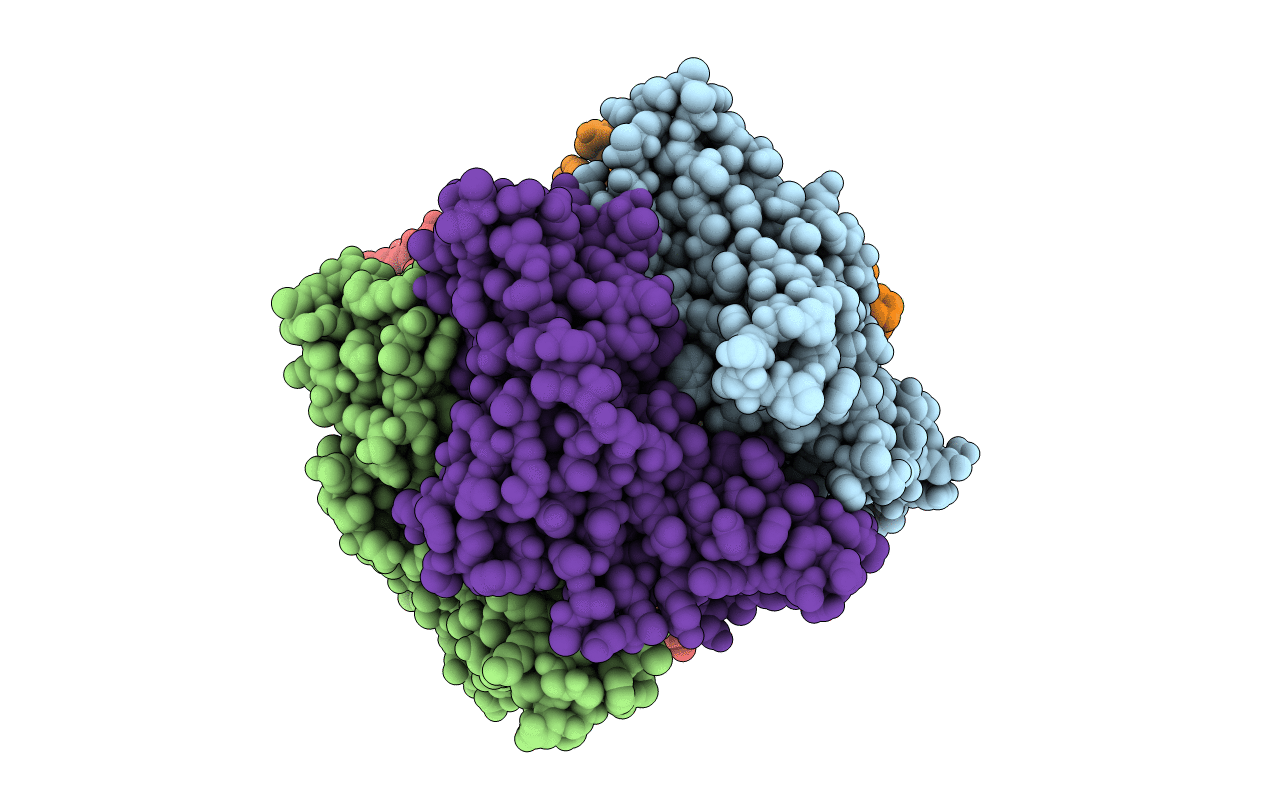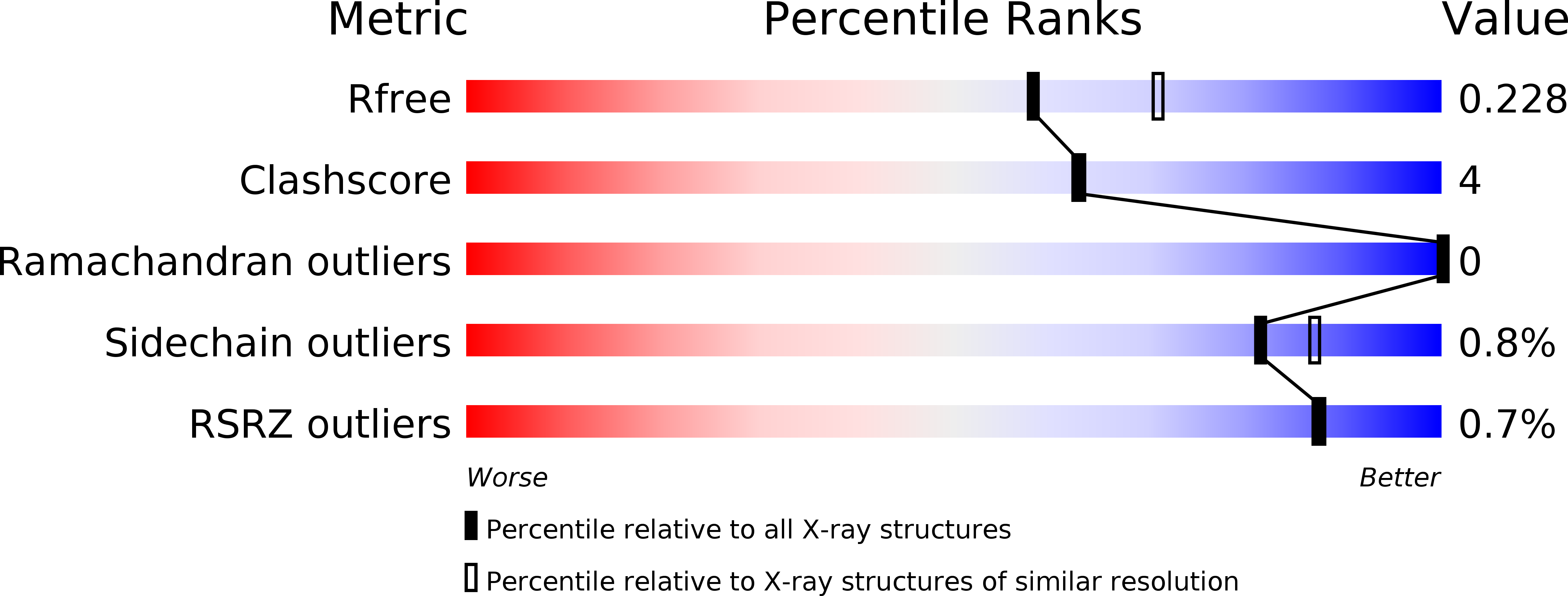
Deposition Date
2015-04-29
Release Date
2015-05-13
Last Version Date
2024-10-30
Entry Detail
PDB ID:
4ZJS
Keywords:
Title:
Crystal structure of a chimeric acetylcholine binding protein from Aplysia Californica (Ac-AChBP) containing the main immunogenic region (MIR) from the human alpha 1 subunit of the muscle nicotinic acetylcholine receptor in complex with anatoxin-A.
Biological Source:
Source Organism:
Homo sapiens (Taxon ID: 9606)
Aplysia californica (Taxon ID: 6500)
Aplysia californica (Taxon ID: 6500)
Host Organism:
Method Details:
Experimental Method:
Resolution:
2.23 Å
R-Value Free:
0.22
R-Value Work:
0.19
R-Value Observed:
0.19
Space Group:
I 2 3


